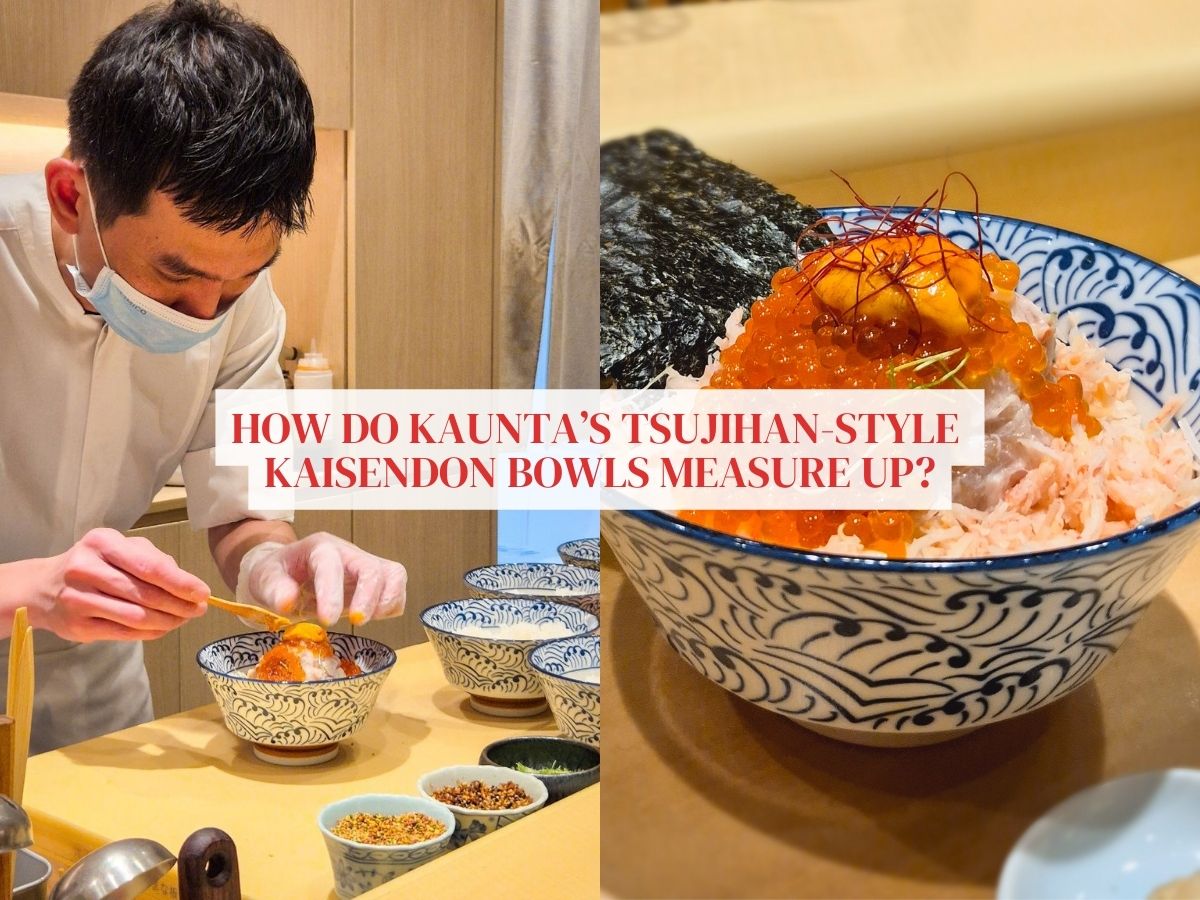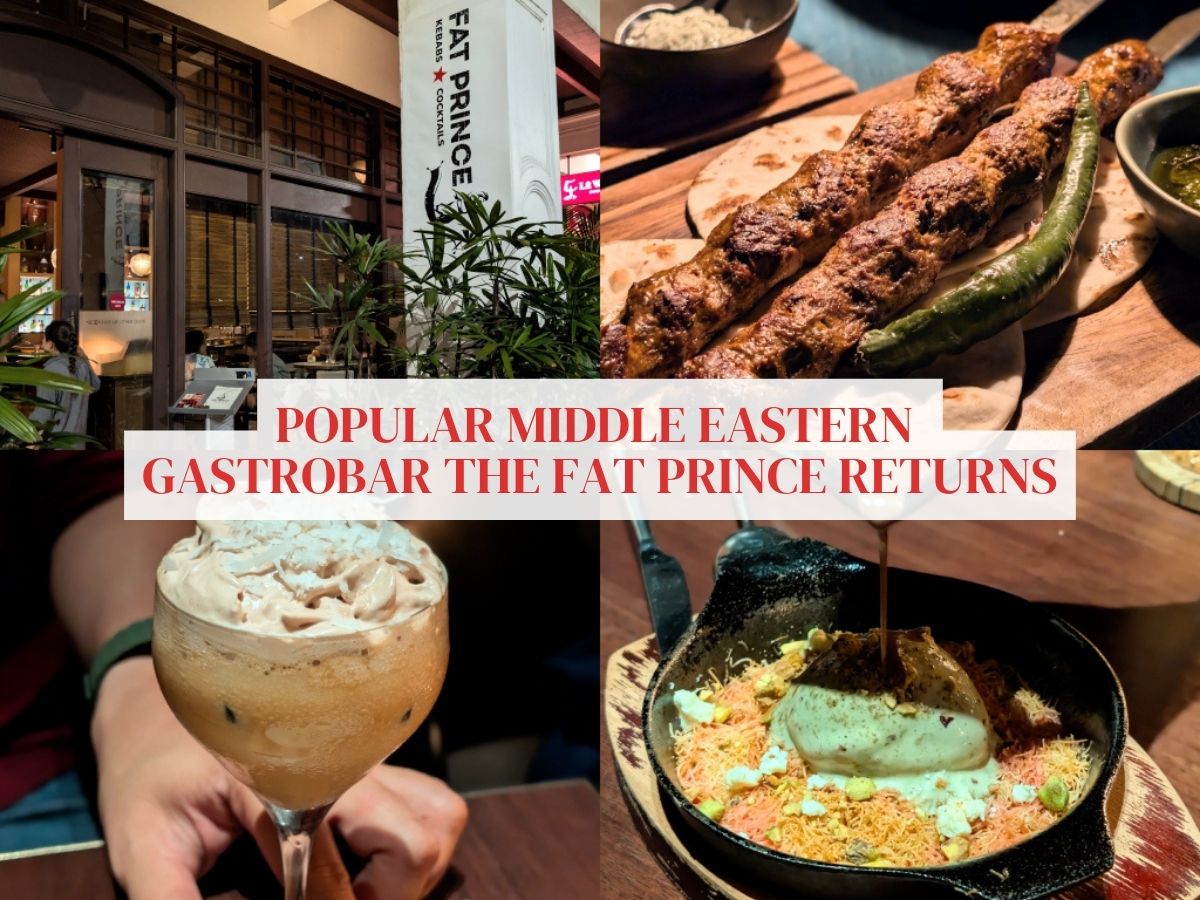Review: Kaunta in Singapore offers a good, value-for-money take on the popular Tsujihan kaisendon
- Kaunta, a Japanese restaurant in Tanjong Pagar serves up kaisendon bowls that are nearly similar to the viral Tsujihan bowls
- The entire experience includes an accompanying sashimi side dish and a broth top-up, just like you’d get in Japan
- Its bowls start from S$19.90 and go up to S$39.90, with even a cooked seafood option for non-sashimi lovers
Kaunta Singapore is unabashed about riding on the popularity of the viral Tsujihan kaisendon from Tokyo, Japan, making references to this prized sashimi bowl on its social media when it first launched this item.
If you ever head to Tsujihan in Tokyo, it’s a two-hour wait for a prized bowl of its kaisendon (traditional Japanese bowl with raw sashimi), even with five stores around the city. Some joke that it’s so popular among Singaporeans that the local accent is all you hear while waiting in line.
While I’ve yet to go to the real McCoy in Tokyo itself, I managed to catch its pop-up at Torasho Ramen & Charcoal Bar in Tanjong Pagar a little under a month ago.
While there were no queues as the pop-up accepted reservations, the bowls served up at the Tsujihan x Torasho pop-up was decidedly pricier than what you’d get in Japan — the normal version was priced at S$58 while the one with uni was S$78.
But hey, given that the bowls were made by the very Japanese chefs from Tsujihan itself, there was little cause for complaint.
Since I had enjoyed the experience so much, it got me wondering about how the local take would measure up.
The backstory
For the uninitiated, the Tsujihan-style kaisendon bowls rose to virality for its extremely affordable prices, starting at a mere 1,250 yen (S$10.49) for a basic Plum bowl and going up to 3,600 yen (S$30.22) for a more premium bowl.
Tsujihan’s version differs from most kaisendons you’re used to, which typically come with raw fish slices.
Instead, it comes as a bowl of fluffy short-grain rice, a mound of chopped-up (almost mashed) raw fish and a dollop of ikura (salmon roe). Depending on your menu choices, you might get a serving of uni on top of that mound.
However, regardless of bowl size, there’s always a top-up of broth midway through your meal, allowing you to warm your tummy and slurp up every remaining bit of rice and fish in your bowl.
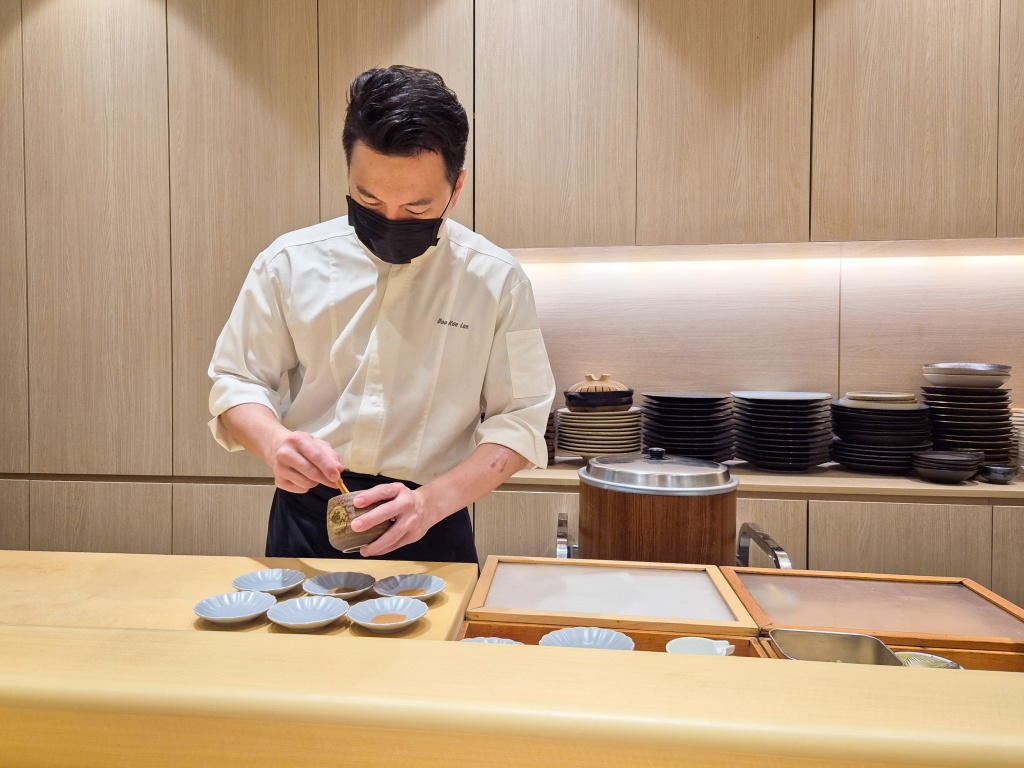
Back to Kaunta: This 16-seater Japanese restaurant at Onze building in Tanjong Pagar didn’t actually start out with its viral kaisendon bowls — Kaunta opened in mid-2019, specialising in omakase and chirashi bowls.
In March this year, it announced a new concept, with the now-famous Tsujihan-style bowls in three sizes as its star attraction — and with a sashimi appetiser, to boot. Just like how Tsujihan does it.
The clincher was that the prices of Kaunta’s kaisendon bowls start at S$19.90. Considering that most kaisendons in Singapore were priced similarly, if not more expensively, it already sounded like a steal.
Add that to Singaporeans’ love for all things Japanese and the queues at Kaunta began forming once word got out.
Our verdict
It’s been a good three months since Kaunta first announced the introduction of its Tsujihan-style kaisendon bowls and the dust has thankfully settled, we think.
We visited on a Tuesday at 11am, anticipating a queue. But we were pleasantly surprised to find that there was no one else in line — perhaps because it was off-peak and office workers in the area weren’t on their lunch break yet.
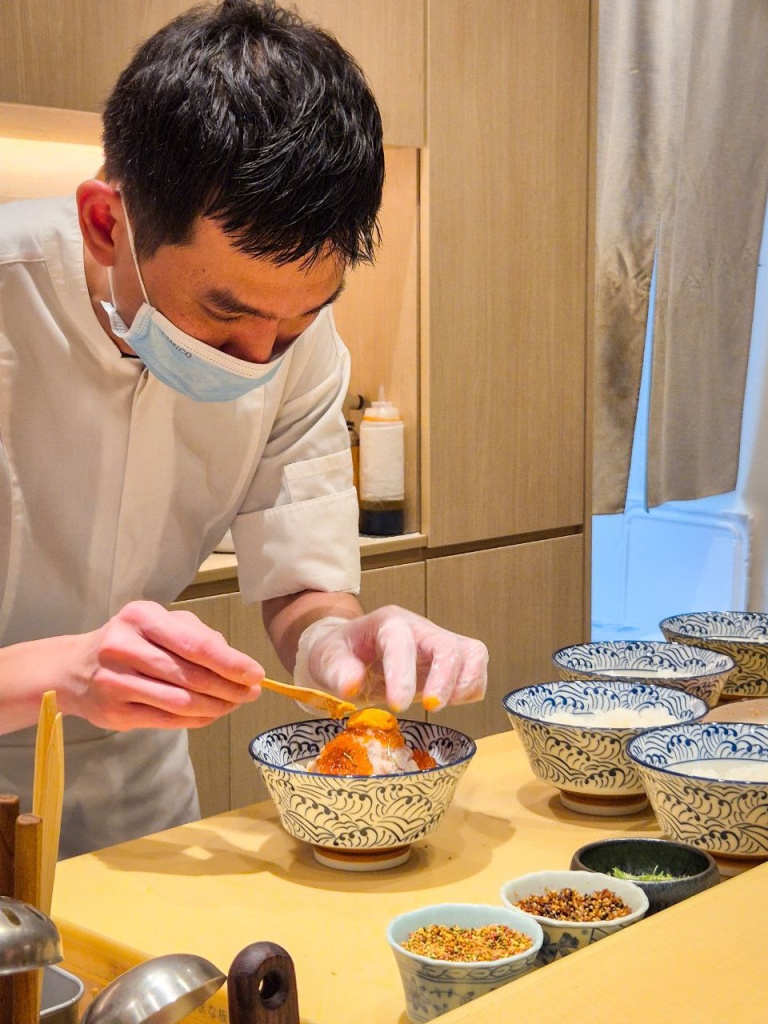
When the doors opened at 11.35am, the restaurant, which comes with mainly counter seats and a small, private booth, filled up slowly, but surely, and the bowls were served out in quick succession.
Its menus mention a 45-minute dining limit, but as there wasn’t a line while we were there and there was a constant flow of diners in and out of the place, this limit wasn’t enforced on us.
What it’s good for
Since we had made the early-ish trek down to Kaunta, we wanted to make our trip worthwhile, starting things off with the sumi ika (spineless squid, S$15) sashimi.

Served together with shoyu, a miniscule dose of wasabi and some tangy wakame on the side, the sumi ika was expectedly fresh, taut yet tender, and lightly sweet.
When it came to the highly anticipated bowls, we chose the medium-sized Hana (S$29.90), out of three possible variations. All of these bowls come with rice, 10 varieties of sashimi, and are topped with ikura, uni and snow crab, with a side of aged hamachi (yellowtail) sashimi.
While we initially thought meant that the smaller-sized bowl would have less rice and fish, and conversely the bigger bowl, more, the attentive staff informed us that the different sizes instead correspond to the amount of ikura, uni and crab you’d get.
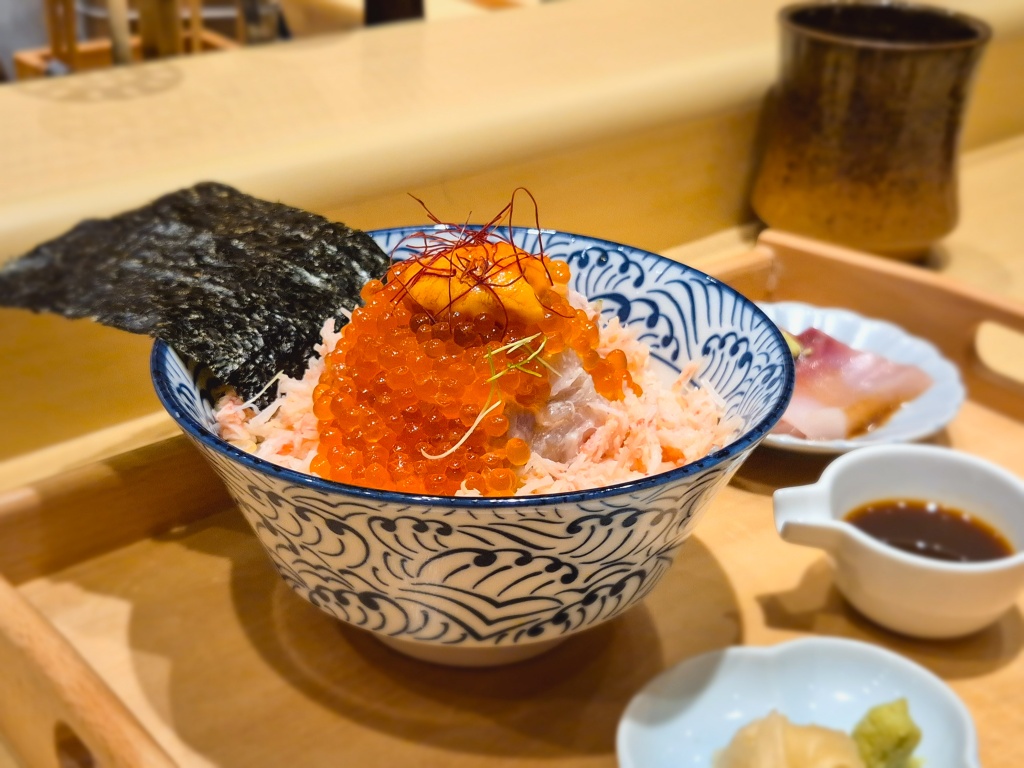
Here’s how it goes: You mix the wasabi in the egg yolk shoyu, drizzle the sauce over the ingredients, and mix the sashimi, ikura, uni, and crab all together.
Right off the bat, I was able to tell that there was a marked difference in Kaunta’s bowl — its sashimi was chunkier, not as minced as Tsujihan’s, which actually made for a more enjoyable experience, since you could fully appreciate the different textures of each fish.
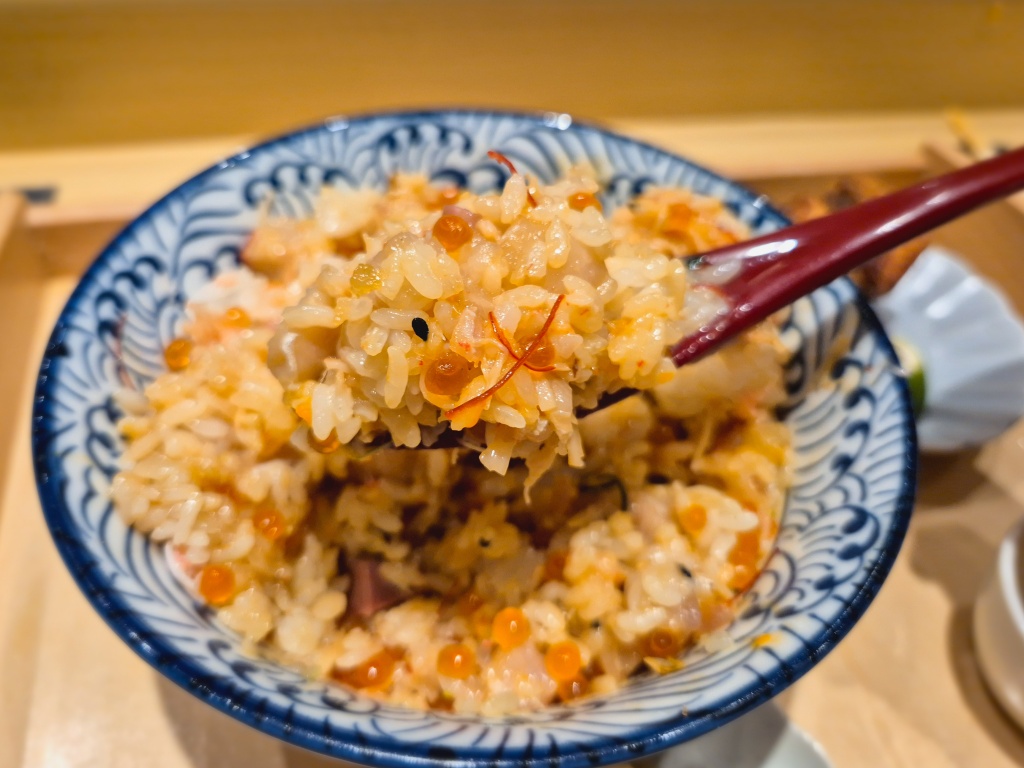
Eat till you’re about halfway done with your meal, before asking for a top-up of hot, fish-bone broth to finish off the rest, ochazuke-style.
Tsujihan recommends calling for your soup when you’re about two-thirds done, but there isn’t a hard-and-fast rule at Kaunta — so we opted for our soup at the midway point.
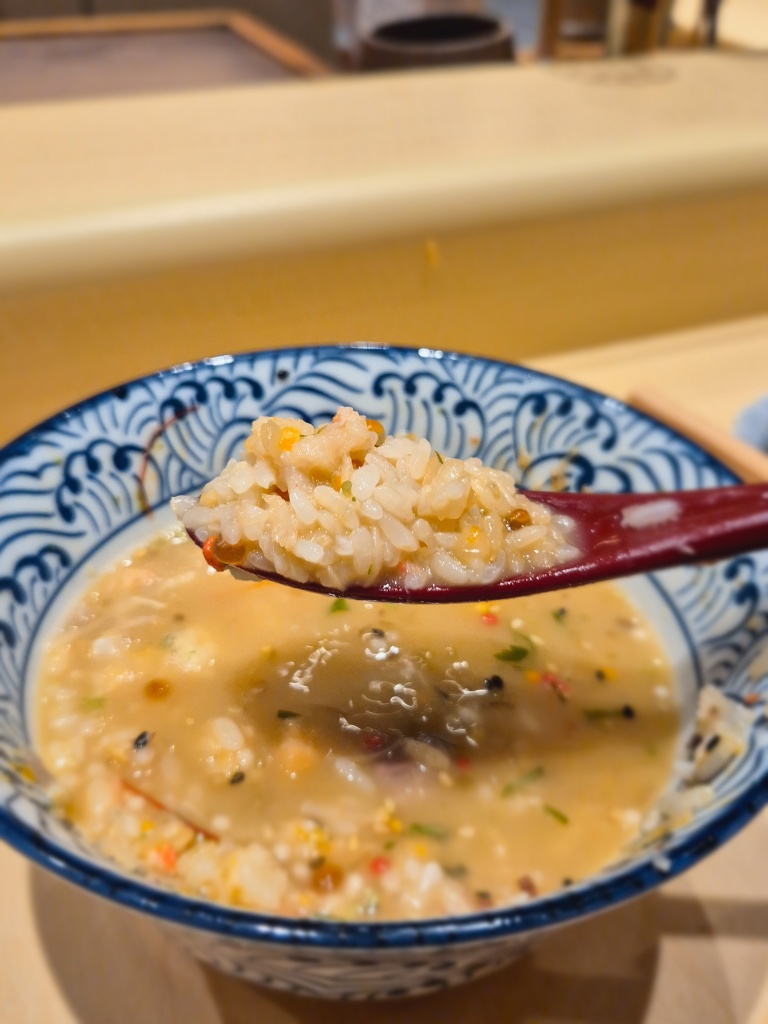
The slightly milky soup, which is said to be cooked for six hours, was clean tasting — perhaps a little too clean — and while I welcomed the respite after a whole bowl of raw fish, I expected the fish stock to be more prominent (a la Tsujihan).
Nonetheless, it was still a tasty bowl of soup and my dining companion and I wiped up every drop of soup and grain of rice.
For good measure we also ordered its new-ish anago don (S$31.90), which comes with a tempura anago (freshwater eel) drizzled with sweet tare (dipping) sauce and an onsen egg. This bowl, marketed as an alternative for those who prefer cooked seafood, was also topped with ikura and snow crab, but not uni.

We enjoyed the freshness of the anago and the lightness of its tempura batter. The combination of the onsen egg, ikura and snow crab, when mixed in thoroughly, also ensured there was a good chew and flavour in each bite, instead of what it is — a bowl of fried fish and plain rice.
When it came to mixing the soup in, the creaminess of the onsen egg made the rice-soup-mix a lot more savoury than the regular kaisendon version — which we enjoyed, but only to a point, before it got too cloying for us.
We also recommend keeping at least half your tempura anago for the soup, because we didn’t, and regretted it entirely. The battered eel stays crispy even when soaked in the soup and provides a good textural contrast, akin to the crispy fish slices you’d get in a bowl of coffeeshop fish soup.
What it could improve on
There was little to fault about the whole experience, from the time we entered till we left — the staff were friendly, had a measured level of interactivity (it is Singapore, afterall) and answered any questions we had on the food, readily.
We also loved that the restaurant kindly included chairs outside its restaurant for waiting diners — a small but noticeable touch of service.
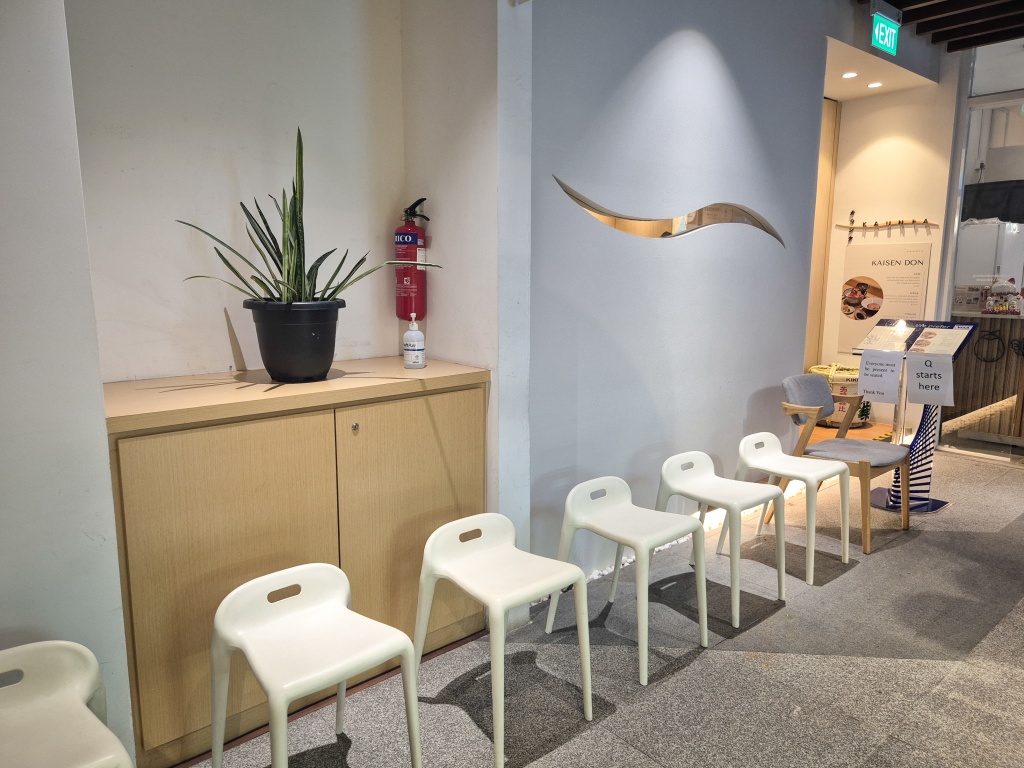
If anything, the anago don felt comparatively pricier, given that I was able to get the raw sashimi bowls for less, but the freshness of the anago more than made up for it. Although, the addition of another cooked side (in lieu of the missing uni) would have sweetened the deal, for sure.
Our quick takes
Is it conducive to conversation? Yes, too conducive. The restaurant is pin-drop quiet so you would do well to steer clear of having a full-on, animated conversation in there — besides you’d probably be too busy appreciating the food to have time to chat.
Is a reservation necessary? You won’t be able to, anyway. It’s walk-ins only, even for dinner. We’d recommend going there for an early or late-late lunch (at, say, 2.30pm for its last order), and avoiding the peak lunch hour like the plague if queueing isn’t your thing.
How to get there? Kaunta Singapore is a nine-minute walk from Tanjong Pagar MRT station’s Exit A. Onze building can be a tad tricky to locate. Just look for Tanjong Pagar Plaza — it’s right behind it.
HungryGoWhere paid for its meal at this cafe for this review.
Looking for more dining options in Tanjong Pagar? We’ve got just the listicle for you that spans all cuisine types. There’s also the new Fortuna at Craig Road, which dazzles with its fried pizza among other dishes.
Do explore the new GrabFood Dine Out service for awesome deals.
You can also book a ride to Kaunta Singapore in Tanjong Pagar.
Kaunta Singapore
Onze building, 01-12, 11 Kee Seng Street
Nearest MRT station: Tanjong Pagar
Open: Tuesday to Saturday (11.30am to 2.30pm, 6pm to 9pm), Monday to Saturday (6pm to 9pm) — open for only dinner on Mondays
Onze building, 01-12, 11 Kee Seng Street
Nearest MRT station: Tanjong Pagar
Open: Tuesday to Saturday (11.30am to 2.30pm, 6pm to 9pm), Monday to Saturday (6pm to 9pm) — open for only dinner on Mondays
